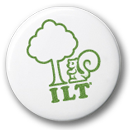Low water irrigation techniques are crucial for conserving water, especially in regions prone to drought or where water resources are limited. Here are several environmentally friendly methods of low water irrigation:
Drip Irrigation:
Description: Drip irrigation delivers water directly to the base of plants through a network of tubes, emitters, and valves.
Advantages: Reduces water usage by delivering water precisely where it's needed, minimizing evaporation and runoff. It also keeps foliage dry, reducing the risk of fungal diseases.
Soaker Hoses:
Description: Soaker hoses are porous hoses that release water slowly along their entire length.
Advantages: Efficiently waters garden beds and rows of plants, again reducing evaporation and runoff.
Mulching:
Description: Applying mulch around plants helps retain moisture in the soil by reducing evaporation.
Advantages: Improves soil structure, moderates soil temperature, and suppresses weed growth, which can compete with plants for water.
Rainwater Harvesting:
Description: Collecting rainwater from roofs or other surfaces in barrels or cisterns for later use in irrigation.
Advantages: Uses natural precipitation, reducing reliance on municipal water supplies or wells during dry periods.
Micro-Sprinklers:
Description: Micro-sprinklers deliver water in a fine spray pattern directly to the root zone of plants.
Advantages: Can be adjusted to deliver precise amounts of water, minimizing waste.
Smart Irrigation Controllers:
Description: These controllers use weather data and soil moisture sensors to adjust watering schedules automatically.
Advantages: Ensures plants receive adequate water without overwatering, responding in real-time to weather conditions.
Xeriscaping:
Description: Designing landscapes with drought-tolerant plants that require minimal watering once established.
Advantages: Reduces overall water usage in landscaping, often eliminating the need for supplemental irrigation once plants are established.
Raised Beds and Container Gardening:
Description: Growing plants in raised beds or containers allows for better control over soil moisture.
Advantages: Efficient use of water as it's contained within a defined area, reducing water loss through runoff.
By incorporating these low water irrigation techniques, you can conserve water, save money on water bills, and contribute to environmental sustainability by reducing your overall water usage in gardening and landscaping activities.

